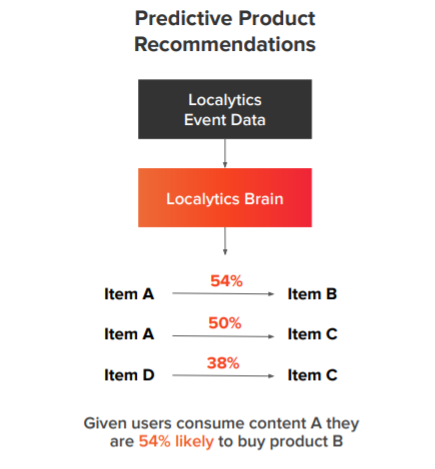Are Your Marketing Campaigns “Cringe-Worthy,” or Connecting? - 5 minutes read
 Are Your Marketing Campaigns "Cringe-Worthy," or Connecting?
Are Your Marketing Campaigns "Cringe-Worthy," or Connecting?Are you speaking to me? Woah, for a second there I thought you were looking over my shoulder.
Not sure if you are reaching “the” customer, a “group” of customers, or “all” customers with your current messaging? It’s high time you figured that out.
As marketers, we want customers’ attention, but also know that we need to respect their time. If your messaging is more cringe-worthy than relevant, you risk losing that customer through annoyance, app uninstall, or lost sales opportunity. None of which will help your growth goals.
We know from Salesforce’s State of the Connected Customer that 57% of mobile users are okay with sharing their personal data, and 77% will “choose, recommend and pay more” for personalized experiences … but, only 22% of users are satisfied with the personalization they receive. This is a giant business opportunity for brands, because time on mobile continues to increase for every generation. How can you grab a user’s attention on their most omnipresent device?
Accenture has done similar work on the value of great, personalized experiences. Core findings are that 75% of customers are more likely to buy from an organization that:
Now, it’s not really surprising that customer satisfaction around personalization is low, because it’s actually hard to do well, and at scale. There are many components to Personalization, and to execute a highly personalized campaign, you’ll need to consider:
Those decisions touch a lot of individuals and departments, and coordination can be a challenge. But the rewards can be tremendous.
In this blog post, and also in a recent webinar, we highlight how marketers can quickly identify the “what” of the personalization formula. That begins with predictive product recommendations — which was the third bullet of Accenture’s great customer experience research above.
You’re likely familiar with this as a consumer. You buy or look at one item, and you get a recommendation for similar items you may need or enjoy. This is the digital backbone of Amazon’s growth in some ways.
In fact, many of our customers who use predictive product recommendations, typically see results 2-4x greater than standard campaigns. And at the heart of all this is personalization.
For example, using Localytics, you can come to these conclusions about the relationship between a series of products:
In your dashboard, it would look like this:
And your end user? They’d get this:
You know they’re 54% more likely to buy this product, so the push they receive is truly tailored to them and based on data.
It’s beyond just push, though. With the Localytics platform, you can also engage with users in-app, in-Inbox, geo-based (“check out the store near you for this deal,” etc.), and via web push.
What you’re doing here is using a personalization strategy, backed by data, to drive intelligent product recommendations and operate at scale. And it works: as we noted in our recent webinar on predictive product recommendations, one client of ours saw a 111% uptick in Annual Revenue Per User (ARPU), with a corresponding 68.8% lift in transactions per user.
No, not at all. It only takes about 21 days to go-live, following this timeline:
Beginning with data, you define the rules by Day 3, then approve the rules within four days of that. Once the rules are approved, you can create campaigns within a week, and launch those campaigns within another week. While there are always competing priorities in a business, we’ve seen this timeline work with multiple clients. That means that from “data investigation” to “go live” is only about 3-4 work weeks; manage multiple predictive campaigns at once as you get better at defining rules, and you’ll see growth across multiple products within months.
If you’d be interested in talking more about setting up some basic predictive campaigns for your product suite, let’s start a conversation. I would be happy to help you learn more about delivering Personalization that delivers these same results for your organization.
Source: Business2community.com
Powered by NewsAPI.org
Keywords:
Marketing • Marketing • Marketing • Attention • Risk • Customer • Application software • Salesforce.com • Customer • User (computing) • Personally identifiable information • User (computing) • Personalization • Mobile phone • User (computing) • Machine • Accenture • Employment • Organization • Customer satisfaction • Personalization • Blog • Web conferencing • Marketing • Personalization • Predictive analytics • Product (business) • Recommender system • Accenture • Customer experience • Recommender system • Amazon.com • Customer • Predictive analytics • Product (business) • Marketing • Personalization • Dashboard (macOS) • End user • Product (business) • Data • User (computing) • Mobile app • Email • Computer data storage • World Wide Web • Personalization • Data • Artificial intelligence • Product (business) • Web conferencing • Predictive analytics • Product (business) • Customer • Revenue • Average revenue per user • Business • Customer • Data • Workweek and weekend • Management • Marketing • Economic growth • Predictive analytics • Marketing • Product (business) • Personalization • Organization •